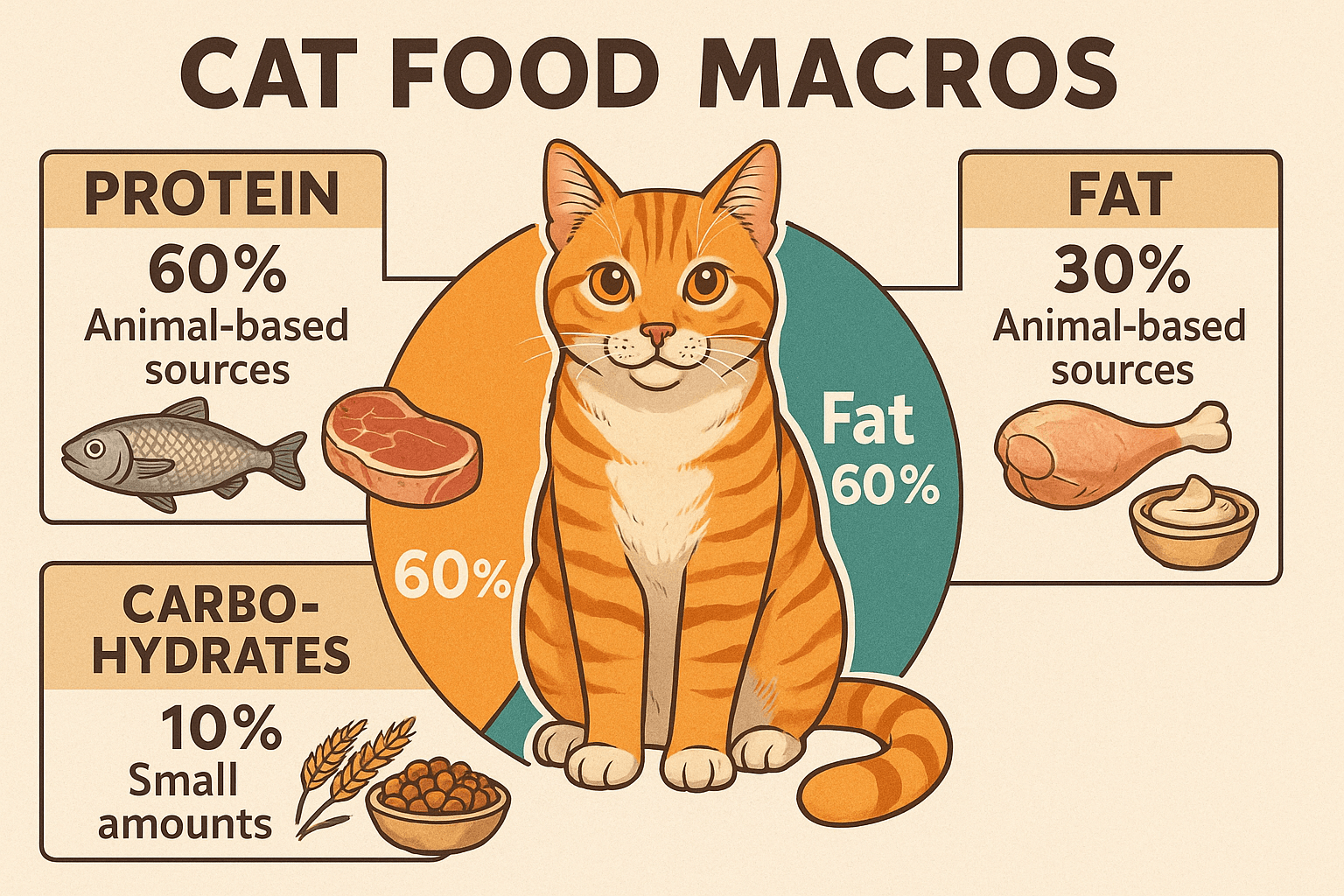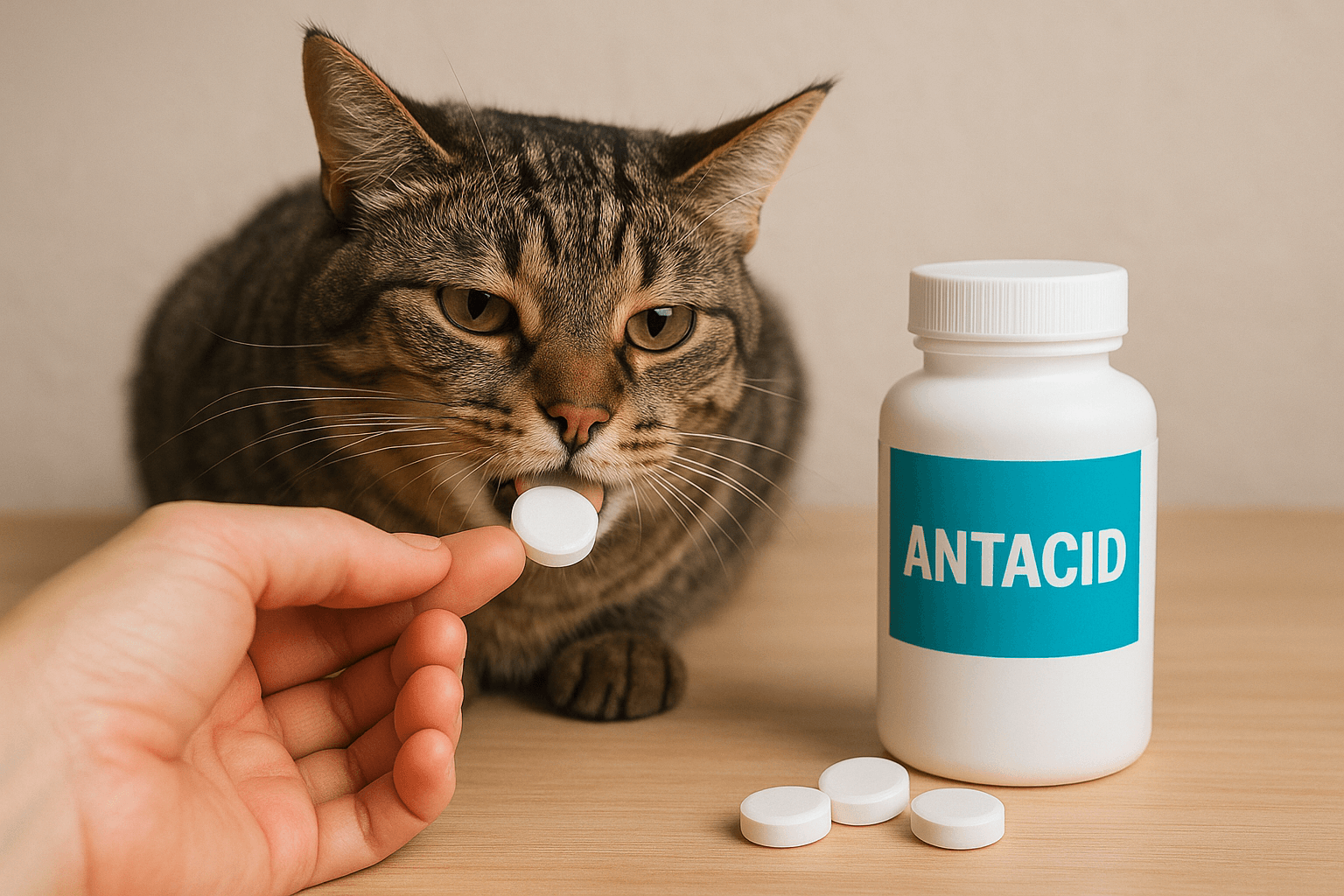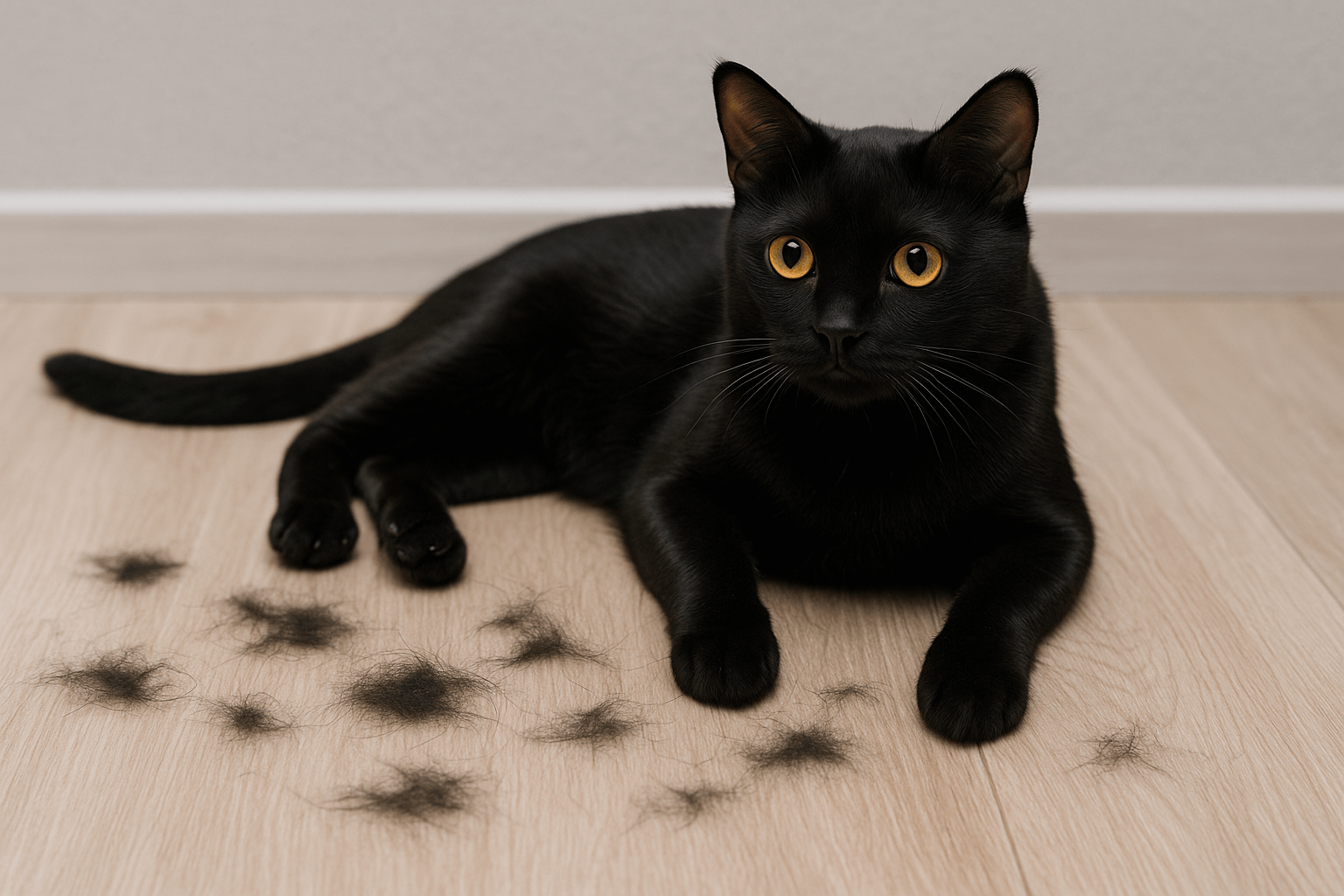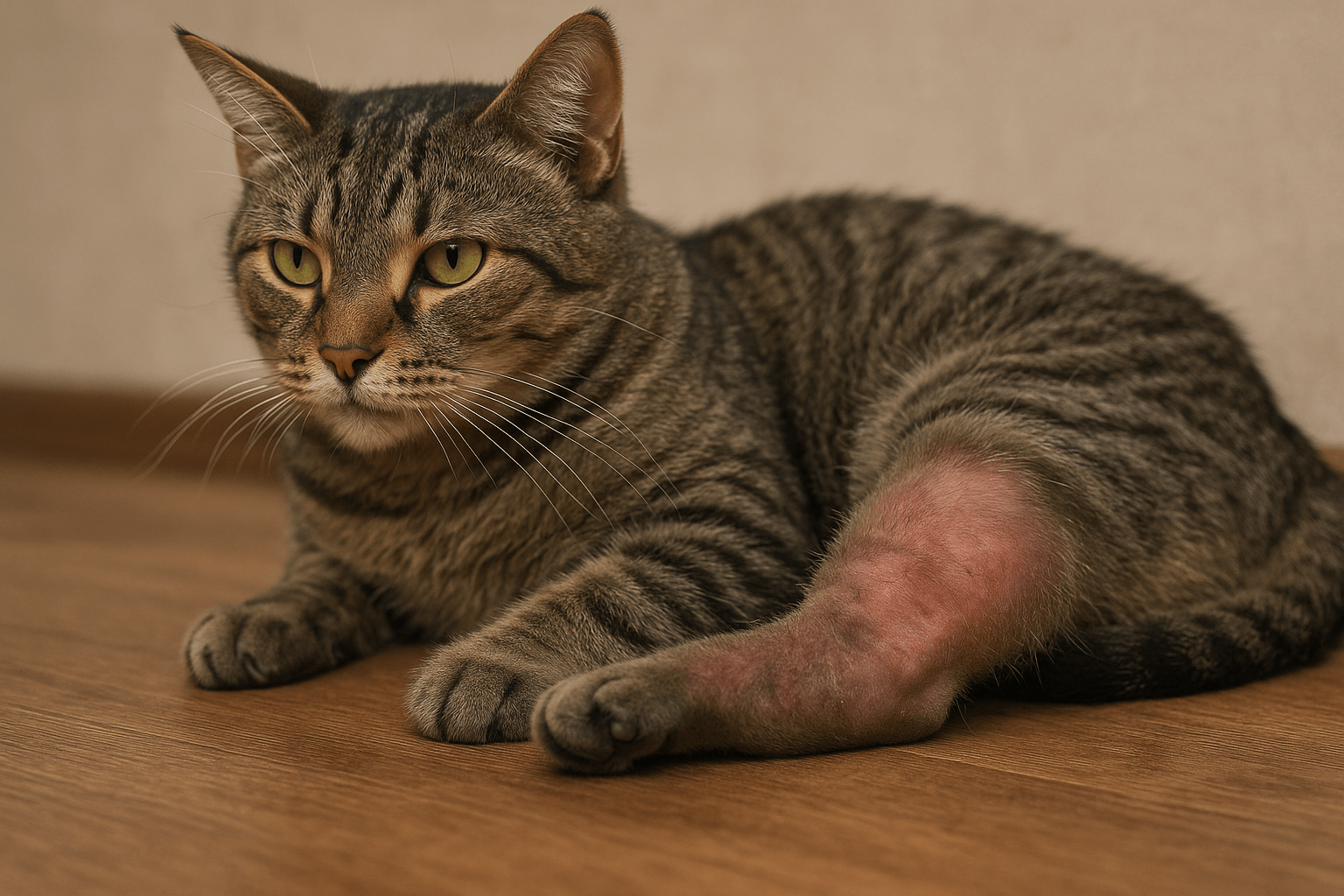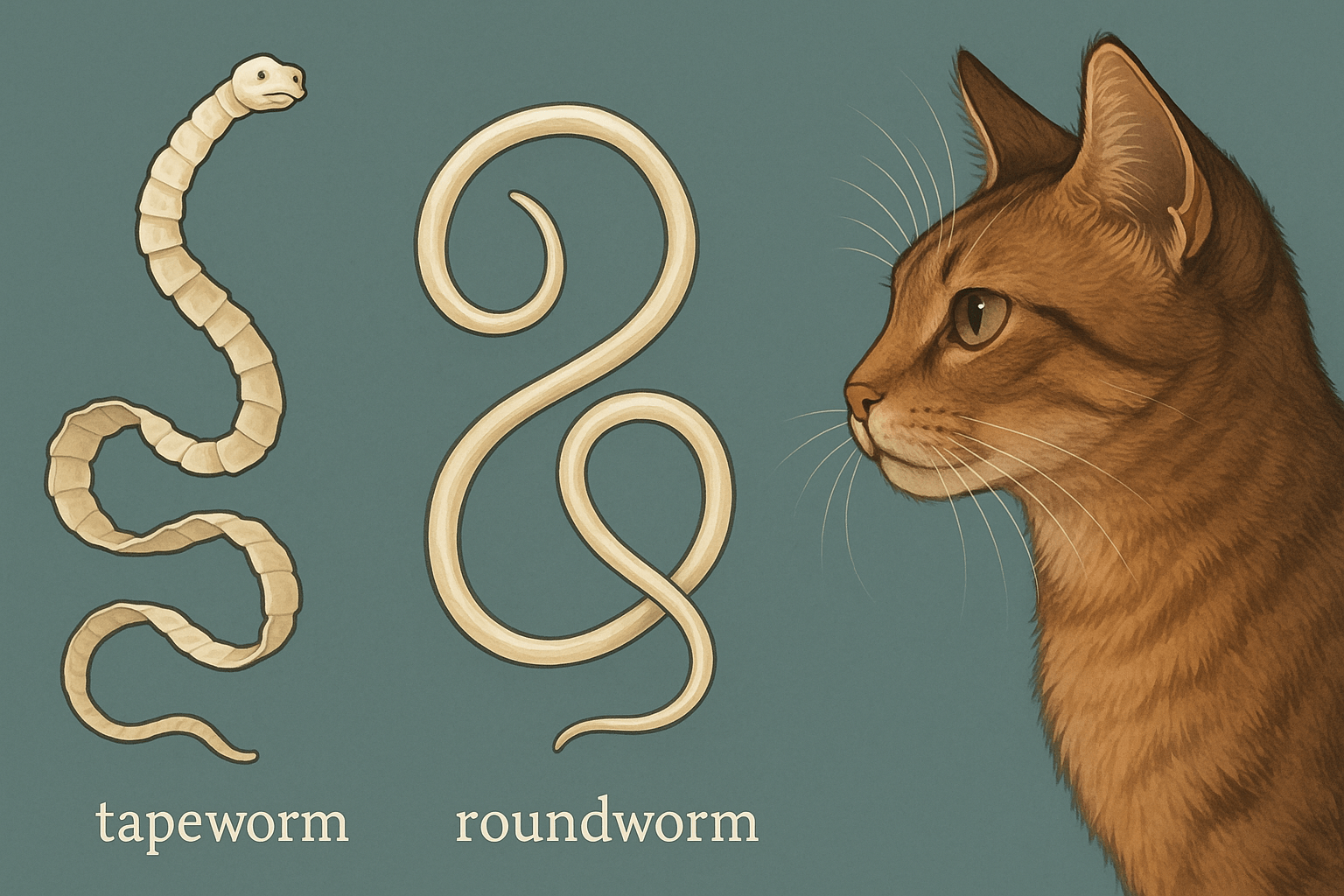Understanding Cat Food Macros: A Guide to Balanced Nutrition
When it comes to feeding your feline friend, understanding the macronutrients in their food is essential for ensuring they thrive. Cats have unique dietary needs compared to other pets, and their health depends on a proper balance of proteins, fats, and carbohydrates. These macronutrients—often referred to as “macros”—play distinct roles in supporting energy levels, muscle development, and overall well-being. Whether you’re a new cat owner or simply looking to optimize your cat’s diet, learning about cat food macros can help you make informed decisions. Let’s explore what these macros are, why they matter, and how to provide your cat with the nutrition they need to live a happy, healthy life.
Expert Insight: The Versatility of Nutrient Sources in Cat Nutrition
“Nutrients are components of the diet that perform specific jobs in the body. Cats can get the nutrients they need from a variety of ingredients. For example, calcium (a nutrient) can come from ingredients like bone, bone meal, dairy products, organ tissues, meat, legume plants, and a mineral supplement.”
The Role of Macronutrients in Cat Food
Macronutrients form the foundation of your cat’s diet, each serving a specific purpose in maintaining their health. Understanding these roles can guide you in choosing the right food for your furry companion.
Protein: The Building Block of Feline Health:
Cats are obligate carnivores, meaning protein is their primary energy source. It supports muscle growth, tissue repair, and immune function.Fats: Essential for Energy and Skin Health:
Healthy fats provide concentrated energy and aid in nutrient absorption. They also contribute to a shiny coat and supple skin.Carbohydrates: Limited but Important:
While cats don’t require high levels of carbs, small amounts can provide quick energy and support digestive health when sourced from quality ingredients.Water: An Often Overlooked Macro:
Hydration is critical for cats, as they naturally have a low thirst drive. Wet foods with high moisture content can help meet their hydration needs.Balancing Macros for Optimal Health:
A well-balanced diet ensures that each macronutrient is present in the right proportions, tailored to your cat’s age, activity level, and health status.
By prioritizing these macronutrients, you can ensure your cat receives the nourishment they need to stay active and vibrant.
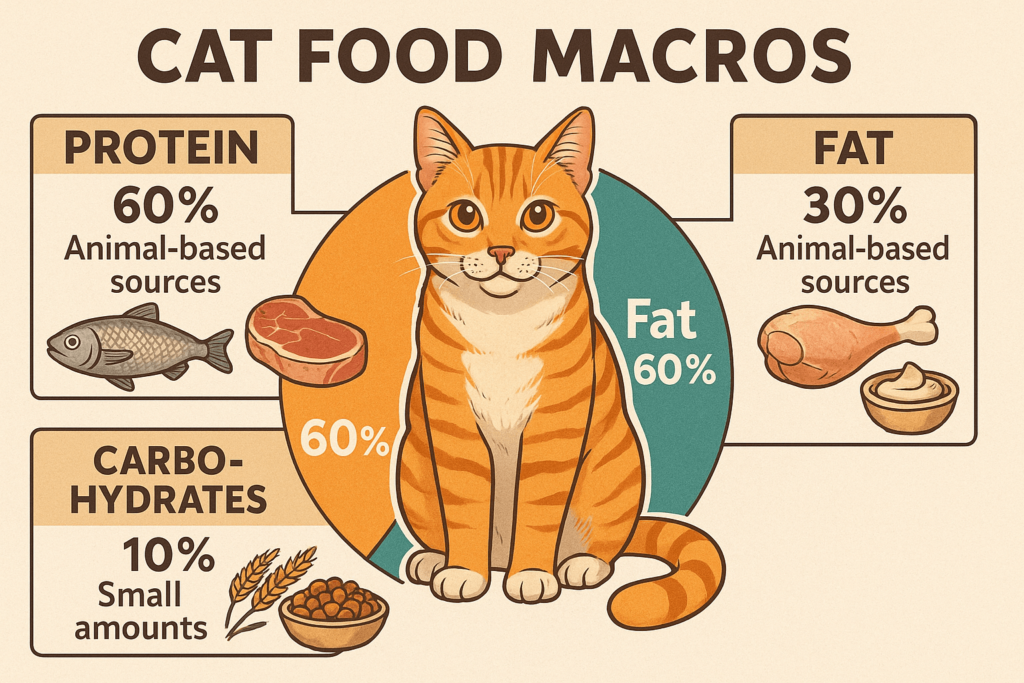
How to Evaluate Cat Food Labels for Macros
Reading cat food labels can feel overwhelming, but focusing on macronutrients simplifies the process. Here’s how to assess whether a food meets your cat’s nutritional needs.
Check the Protein Percentage:
Look for foods where protein is listed as the first ingredient, ideally from animal-based sources like chicken, turkey, or fish.Identify Healthy Fat Sources:
Ingredients like salmon oil, chicken fat, or flaxseed indicate the inclusion of beneficial fats for skin and coat health.Watch for Carbohydrate Fillers:
Avoid foods loaded with grains or starchy vegetables, which can dilute the nutritional value and lead to weight gain.Look for Moisture Content:
Wet or canned foods typically contain higher moisture levels, making them ideal for promoting hydration.Understand Guaranteed Analysis:
The guaranteed analysis section provides percentages of protein, fat, fiber, and moisture, helping you compare products effectively.
By mastering label reading, you can select high-quality cat food that aligns with your pet’s dietary requirements.
Check this guide 👉Raw Cat Food Recipe: Best 7 Expert Tips!
Check this guide 👉How Much Does Cat Food Cost Per Month? Best 7 Tips!
Check this guide 👉Top 4 Best Canned Cat Food Products Your Feline Will Love!
Key Macronutrients in Cat Food | Recommended Sources |
|---|---|
Protein | Chicken, turkey, beef, salmon |
Fats | Salmon oil, chicken fat, flaxseed |
Carbohydrates | Sweet potatoes, peas, pumpkin |
Water | Wet food, broths, hydration gels |
Fiber | Pumpkin, beet pulp, psyllium husk |
Common Mistakes When Balancing Cat Food Macros
Even well-intentioned cat owners can make mistakes when trying to balance macros in their pet’s diet. Avoiding these pitfalls ensures your cat stays healthy and satisfied.
Overfeeding Carbohydrates:
Excessive carbs can lead to obesity and diabetes in cats, who metabolize them poorly compared to proteins and fats.Choosing Low-Quality Proteins:
Plant-based proteins lack the amino acids cats need, so always prioritize animal-derived protein sources.Ignoring Hydration Needs:
Feeding dry food exclusively without adequate water intake can increase the risk of urinary tract issues.Overlooking Age-Specific Needs:
Kittens, adults, and senior cats require different macro ratios based on their life stage and activity levels.Relying Solely on Homemade Diets:
Without professional guidance, homemade diets may lack the proper balance of macros and micronutrients.
By avoiding these common errors, you can provide your cat with a diet that supports their long-term health and vitality.
Benefits of a Macro-Balanced Diet for Cats
Feeding your cat a diet rich in balanced macronutrients offers numerous advantages that extend beyond basic nutrition. Here’s how the right macros can improve your cat’s quality of life.
Improved Muscle Tone and Strength:
High-quality protein supports lean muscle mass, keeping your cat agile and active.Enhanced Coat and Skin Health:
Omega-3 and omega-6 fatty acids promote a glossy coat and reduce skin irritation.Better Weight Management:
Proper macro ratios prevent excessive weight gain or loss, maintaining an ideal body condition.Reduced Risk of Chronic Diseases:
A balanced diet lowers the likelihood of obesity-related illnesses like diabetes and arthritis.Increased Energy Levels:
Adequate fats and proteins provide sustained energy, ensuring your cat stays playful and engaged.
A thoughtfully balanced diet not only meets your cat’s nutritional needs but also enhances their overall happiness and longevity.
Signs Your Cat’s Diet Lacks Proper Macros
If your cat isn’t receiving the right balance of macronutrients, certain signs may indicate a nutritional deficiency. Recognizing these symptoms allows you to adjust their diet promptly.
Weight Loss or Gain:
Sudden changes in weight often signal imbalances in protein, fat, or carb intake.Dull or Greasy Coat:
Poor coat condition suggests insufficient fatty acids or protein in their diet.Lethargy or Weakness:
Low energy levels could point to inadequate protein or unhealthy fat sources.Digestive Issues:
Frequent vomiting or diarrhea may result from poor-quality carbs or insufficient fiber.Increased Thirst or Urination:
This could indicate dehydration or improper moisture content in their food.
Addressing these signs early prevents long-term health complications and ensures your cat thrives.
Tips for Transitioning to a Macro-Balanced Diet
Switching your cat to a new diet requires patience and planning. Follow these tips to ensure a smooth transition without upsetting their digestive system.
Gradual Changes Are Key:
Mix small amounts of the new food with their current diet, gradually increasing the ratio over 7-10 days.Monitor for Adverse Reactions:
Watch for signs of allergies or intolerance, such as itching, vomiting, or diarrhea, during the transition period.Maintain Consistency:
Stick to the same feeding schedule to minimize stress and confusion for your cat.Consult Your Veterinarian:
Seek professional advice before making significant dietary changes, especially for cats with existing health conditions.Offer Variety Within Balance:
Rotate protein sources while maintaining consistent macro ratios to keep meals exciting yet nutritious.
With careful planning, transitioning to a macro-balanced diet becomes a seamless process.
Homemade vs. Commercial Cat Food
Deciding between homemade and commercial cat food involves weighing the pros and cons of each option. Both approaches have merits, provided they meet your cat’s macro needs.
Homemade Food Offers Control:
Preparing meals at home allows you to control ingredient quality and tailor recipes to your cat’s preferences.Commercial Food Provides Convenience:
Store-bought options save time and are formulated to meet AAFCO standards for balanced nutrition.Homemade Requires Expert Guidance:
Without veterinary or nutritional expertise, homemade diets risk being unbalanced or deficient in essential nutrients.Commercial Options Vary Widely:
Not all commercial foods are created equal; premium brands tend to offer better macro profiles than budget alternatives.Combining Both Can Work:
Supplementing commercial food with occasional homemade meals strikes a balance between convenience and customization.
Ultimately, the best choice depends on your lifestyle, resources, and commitment to your cat’s dietary needs.
Frequently Asked Questions About Cat Food Macros
What percentage of protein should be in my cat’s food?
Most experts recommend at least 30-40% protein in a cat’s diet, depending on their age and activity level.
Are carbs necessary for cats?
While not essential, small amounts of digestible carbs can aid digestion if sourced from high-quality ingredients.
Can I feed my cat a raw diet?
Raw diets can work if carefully balanced, but consult a veterinarian to avoid nutritional gaps or safety risks.
How do I know if my cat is getting enough fat?
Signs of insufficient fat include dry, flaky skin and a dull coat. Adjust their diet accordingly under vet guidance.
What happens if my cat eats too many carbs?
Excessive carbs can lead to obesity, lethargy, and increased susceptibility to diseases like diabetes.
Prioritizing Your Cat’s Nutritional Well-Being
Understanding cat food macros empowers you to make informed choices that directly impact your pet’s health and happiness. By focusing on high-quality proteins, healthy fats, and limited carbs, you can create a diet that supports your cat’s natural instincts and unique physiology. Remember, every cat is different, so tailoring their nutrition to their individual needs is key to fostering a thriving companion. With knowledge and care, you can ensure your feline friend enjoys a lifetime of vitality and joy.
Cat Antacid: Best 7 Expert Tips! Discover safe antacid options, dosage guidelines, and expert advice to soothe your cat’s stomach and promote digestive health effectively.
Do Bombay Cats Shed? Best 7 Expert Tips! Discover expert advice on managing shedding, grooming tips, and why Bombay cats are low-shedding companions for a clean, stylish home.
What Causes a Swollen Cat Leg? Best 7 Expert Tips! Discover expert advice on identifying causes, symptoms, and treatments for a swollen cat leg to ensure your pet’s health and comfort.
Tapeworm vs Roundworm in Cats: Best 7 Expert Tips! Learn to identify, prevent, and treat tapeworms and roundworms in cats with expert advice for a healthy, parasite-free feline companion.

